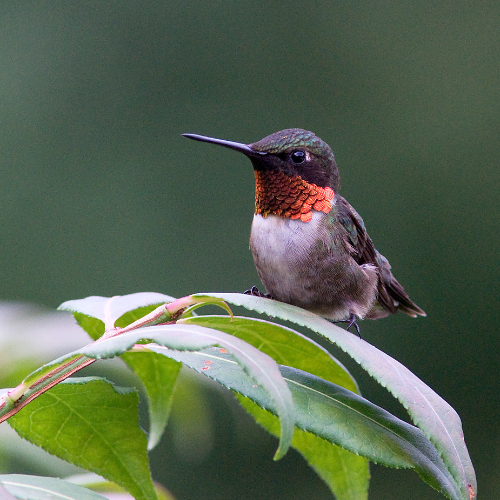As hummingbirds migrate to Central America and Mexico for winter, they are frequent visitors in our South Central Texas gardens during August and September. That means Texas Master Naturalists are eagerly stocking up on refined sugar in late summer.
Ruby-throated hummingbirds are especially common to see in our area during migrating season. These remarkably tiny, iridescent birds travel along the South Texas coast in September before pushing onward to cross the Gulf of Mexico, a flight that can cover up to 500 miles at a time.
According to National Audubon Society (1), hummingbirds feed every 10-15 minutes and visit more than 1,000 flowers per day. Planting tubular-shaped or vibrant red native plants such as bee balm, hummingbird/pitcher sage, trumpet honeysuckle and Turk’s cap, provides the essential nectar these voracious eaters need to bulk up before their super marathon flight.
Another attractive element to add to your pollinator garden is a hummingbird feeder to help them stay hydrated and energized. The first hummingbird feeder was crafted more than 100 years ago in Massachusetts by Caroline Soule, who fashioned together an artificial trumpet creeper blossom to the opening of a glass bottle containing sugar water (Georgia Wildlife Resources Division, 2).
Hummingbird enthusiasts and biologists alike have settled on this easy recipe: 1:4 mixture of granulated sugar and tap water or ¼ cup of sugar in 1 cup. Avoid substitutes that can cause fungal growth such as honey, corn syrup, or raw sugar as well as any synthetic ingredients such as red color additive. Be sure to change your homemade flower nectar and clean the feeder every 2-3 days.
Emily Grant, Texas A&M AgriLife Extension Service agricultural and natural resources agent for Val Verde County, says hummingbird feeders can be kept out all year long in Texas if cared for properly (3).
Making nectar is a small kindness. Consider filling your feeder with this essential fuel for our feathered friends, and you’ll be rewarded with a throng of abundant hummers to brighten your day.
1- National Audubon Society. Hummingbird Feeding FAQs.
2- Georgia Department of Natural Resources. Out My Backdoor: 4 Parts Water, 1 Part Sugar – A Special Fuel. Terry W. Johnson.
3- Texas A&M AgriLife Extension Service. Spring is the time to put out hummingbird feeders – AgriLife Extension Wildlife & Fisheries (tamu.edu). Dr. Maureen Frank.



